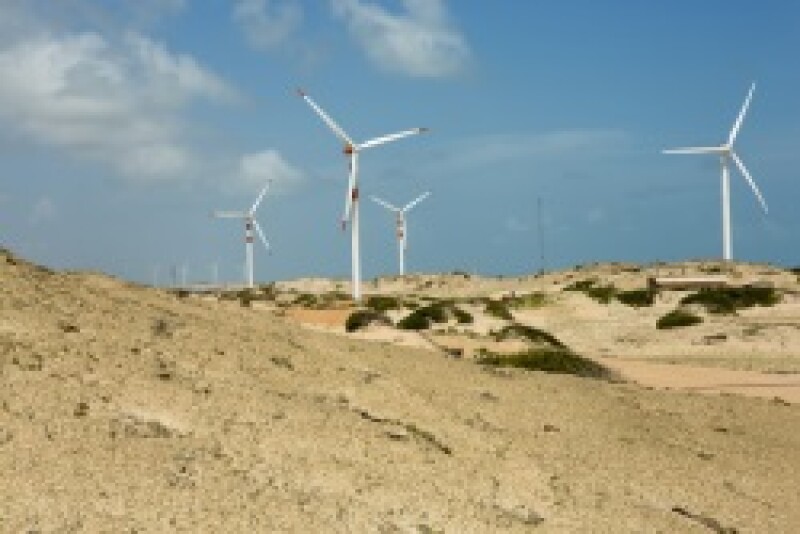
At one with nature: Santander Group City in Madrid
“Santander’s purpose is to help people and businesses prosper,” says Ana Botín, group executive chairman. “We want to be the best retail and commercial bank that earns the lasting loyalty of our people, customers, shareholders and communities.”
Santander’s products and services take into consideration ethical, social and environmental factors, throughout the stages of product and service development and delivery.
This business model, the banks says, together with a solid corporate governance structure, enabled Banco Santander to maintain its leading position among the main international banks in very difficult economic and financial conditions — and without state aid.
But for Santander, sustainability extends beyond the business itself to include its contribution to the economic and social progress of the communities where it operates.
Its wider commitment to society is seen in other areas such as higher education, where Banco Santander invested €146 million in 2014, out of €187 million earmarked for its social investment programme.
Funds also went to the development of initiatives that promote education, entrepreneurship, financial education and culture.
In countries such as Brazil, Argentina, Ecuador and Chile, it is backing microcredit programmes that help foster financial inclusion and supports the communities where it is present by contributing to their economic strength and social development. These programmes had more than 250,286 customers in 2014, with €314.1 million of loans.
And Santander promotes financial education to address the need to promote better use of financial products and services based upon informed and well-founded decisions.

|

|
The banking group also promotes corporate volunteering among its staff, with 59,569 employees taking part in initiatives in 2014 promoted by the bank, as a way of becoming more involved in local communities.
The bank sees participation as also increasing its employees’ motivation and pride in being a part of Santander.
All this is supported by a well-defined sustainability governance structure in place at both the central and regional level. That allows for all the bank’s business areas and support units across the different countries to become involved in the process.
A sustainability committee is chaired by the chief executive and comprises the senior executives, vice-presidents and/or heads of the different divisions of the bank concerned. The vast majority of countries have their own local sustainability committee chaired by the corresponding country head.
In addition, Santander has set up a task force with the aim of analysing the social, environmental and reputational risk of operating in sensitive sectors.
Santander Universities
The bank points to its Santander Universities initiative as setting it apart from other international companies.
The Spanish group, which was this month announced as the winner of Euromoney’s Achievement in CSR Award, has already contributed more than €1.14 billion to the segment since establishing its universities initiative in 1996.

|
Initially focused on Spain, Santander Universities has expanded its reach in tandem with the banking group and now supports more than 1,200 institutions in 20 countries from Brazil to Singapore.
Last year, the division disbursed 28,443 scholarships and grants for university courses, as well as 15,053 distance-learning scholarships for vocational courses and languages.
According to the first comprehensive study into global corporate education CSR, published by the Varkey Foundation in January, Santander spends more than any other Global Fortune 500 company on the segment.
In total, more than 2,100 staff coordinate and manage the bank’s commitment to higher education through Santander Universities.
As well as grants, Santander encourages students and universities worldwide through an extensive programme of awards for innovation, research and academic excellence.
Community and environment
Santander also contributes to the progress of the communities in which it operates through numerous local initiatives.
It works closely with NGOs, foundations and non-profit organizations, which enables it to understand the needs and expectations of local communities, paying special attention to the most disadvantaged groups and those with lower purchasing power.
Further reading |

|
These projects include children’s education, microcredit and entrepreneurship, financial education, art and culture, protection and conservation of biodiversity.
On the environment, the group has a policy in place that sets out the general principles guiding the bank’s sustainability actions, and the necessary mechanisms for analysing social and environmental risks in decisions on project finance transactions.
The group has been a signatory since 2007 of the Carbon Disclosure Project (CDP), the international benchmark standard for business reporting on climate change, and since 2012 has been filing the CDP Water Disclosure.
The group is also included in the main stock market indices that analyse and assess the sustainability actions taken by businesses. The bank has been included in one of the most important of them – the Dow Jones Sustainability Index – since 2000.